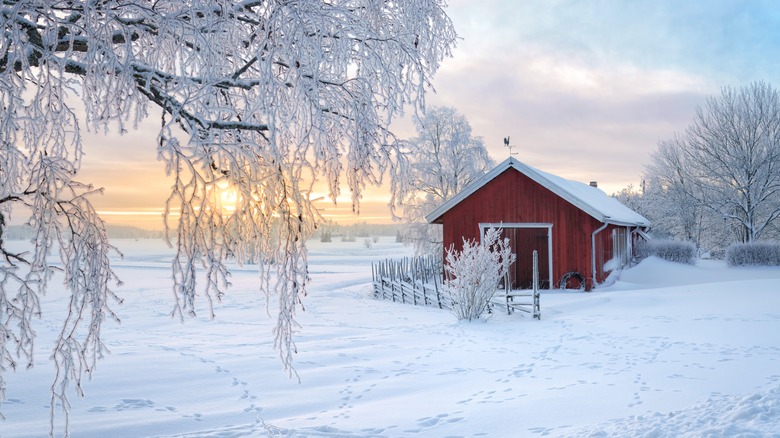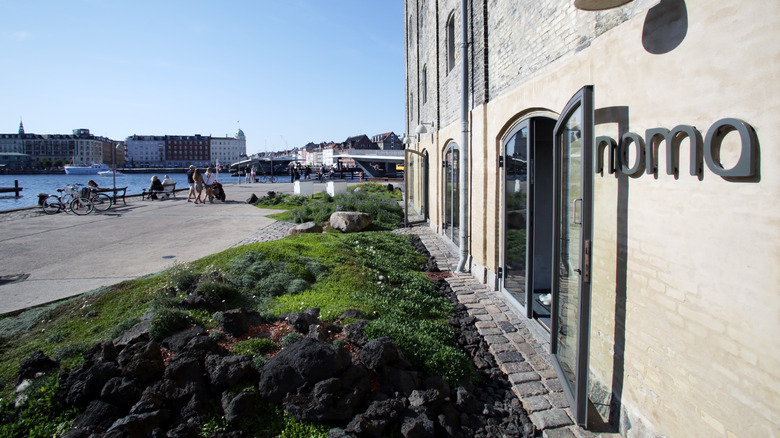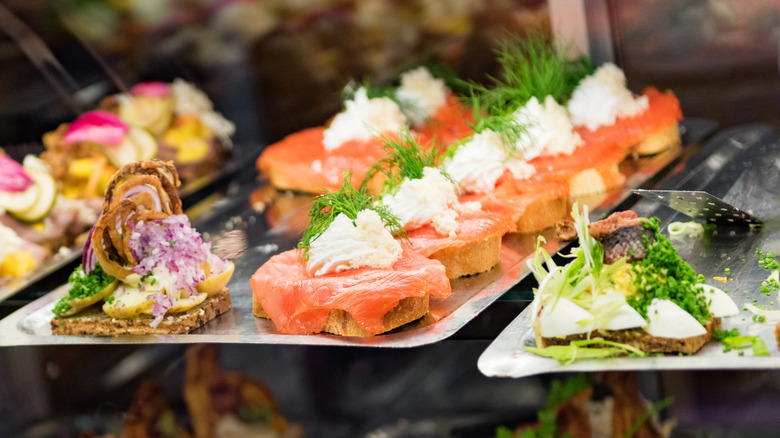Noma's Nordic Food Manifesto Completely Revolutionized The Region's Culinary Identity
There are certain special restaurants that become local institutions, indelibly linked to the identity of their hometown. Occasionally, a restaurant becomes so popular that it eclipses this status and achieves national recognition, such as New Orleans' Commander's Palace or Yountville's The French Laundry. Rarely does a restaurant go beyond this level and achieve international stardom, but for most of its history, Noma has done just that. The Copenhagen eatery, helmed by chef René Redzepi, has achieved near-universal acclaim since opening in 2003, routinely topping lists of the world's best restaurants and earning the coveted three-star label from Michelin (via Forbes).
In January 2023, Noma shocked the culinary world by announcing that it would permanently close the following year, planning to reinvent itself in the future as a test kitchen. Bon Appétit reports that, despite charging diners $500 per person, Noma has faced financial uncertainty, largely due to the long-term impact of the COVID-19 pandemic. Along with this have come allegations from interns about unreasonable working conditions, including grueling 16-hour workdays without pay. It's become part of a broader international dialogue about the culture of haute cuisine, which often glamorizes the trope of the domineering head chef while undervaluing the role of other workers. Noma leaves behind a complicated legacy, but as it closes its doors, one of its most important contributions has already been set in stone. Noma was more than 'the world's best restaurant.' It was a force that changed the very concept of Nordic cuisine.
Nordic food before Noma
Before 2003, Nordic cuisine was ignored by the world at large. Nobody would have thought to list Copenhagen among the great food meccas of the world like Paris, New York, and Tokyo. Eater declares that's no longer the case, thanks to restaurants that have followed in Noma's footsteps, pioneering "New Nordic" cuisine. However, none of these establishments could exist if not for the centuries of rich regional food that preceded them. Traditional Scandinavian cuisine, Old Nordic, if you will, is a powerful example of making the most of one's environment. It's a region where temperatures regularly dip below freezing, and long nights hide the sun away (via TripSavvy). Few would expect life, and therefore food, to thrive there.
Truthfully, the climate does impose some limits on ingredients. NPR acknowledges that you won't find any chili peppers growing in the temperate cold, but that doesn't mean the food is bland. The Vikings brought spices such as saffron, nutmeg, and cardamom, all of which play prominent roles in the region's baked goods. Rye and root vegetables thrive in the cold soil, dairy has a central role year-round, and the extensive coastline puts a spotlight on seafood, like the coveted langoustine. Since the climate entails a shorter harvest period, seasonal specialties like berries, mushrooms, and potatoes are celebrated, as the people know they can't take these goods for granted. This special reverence for the environment is perhaps the most important characteristic of both Old and New Nordic cuisine.
The New Nordic Food Manifesto
The defining moment of the Nordic food revolution came in 2004, with the release of the New Nordic Food Manifesto: 10 commandments to define the region's new culinary identity. The 12 signatory chefs included representatives from each of the Nordic nations: Denmark, Norway, Sweden, Finland, and Iceland, as well as the territories of Greenland, the Faroe Islands, and Åland. The 10 guiding principles mainly focus on the importance of using local ingredients and promoting Nordic products. For instance, the second principle is "To reflect the changes of the seasons in the meal we make." Environmentalism is another theme, reflected by the sixth principle: "To promote animal welfare and a sound production process in our seas, on our farmland and in the wild."
Noma has its fingerprints all over the manifesto. René Redzepi was one of the signatories, but the most influential party was one whose name did not appear on the document. Food & Wine calls Claus Meyer, the co-owner of Noma, "the principle architect" of the manifesto. He's been compared to James Beard and Alice Waters, serving as a culinary ambassador whose influence can be felt far beyond his own restaurant. In preparing to open Noma, Meyers and Redzepi took a gastronomic tour of the Nordic nations. This inspired many of the principles reflected in Noma's kitchen, notably the practice of foraging for ingredients and utilizing unconventional elements such as insects, characteristics that CNN says "changed the world of food."
The New Nordic paradox
Noma's success brought Nordic cuisine to international prominence, but there is a flip side to the New Nordic way. Paradoxically, the people least likely to identify with the movement are Nordic residents themselves. Finnish-American writer Eeva Väänänen Moore, in an enlightening article for Eater, argues that restaurants like Noma misrepresent what is authentically Nordic. While they celebrate local ingredients, they also reject traditional dishes. Noma's reindeer on a bed of moss is an attention-grabbing meal, but not something the average Dane would eat. In contrast, Denmark's official website calls attention to dishes like brown sugar cake, salt licorice, and smørrebrød, an open-faced sandwich served on the country's signature whole-grain rye.
Moore also notes that the New Nordic manifesto lumps all the Nordic countries together, ignoring their differences. René Redzepi himself told Parts Unknown that, when it comes to food, Denmark has more in common with neighboring Germany than Norway or Finland. Food & Wine reveals that Redzepi, New Nordic's defining figure, draws much of his inspiration from outside the region, especially from his family's roots in Macedonia. This is not necessarily a fault. In fact, the blending of cultural influences feels natural and exciting in an increasingly globalized world. But then, is it right to call it Nordic? Moore acknowledges that locals may relate to New Nordic food more in the future, but for now, the perception of the Nordic culinary identity is apparently much different outside the region than within it.



